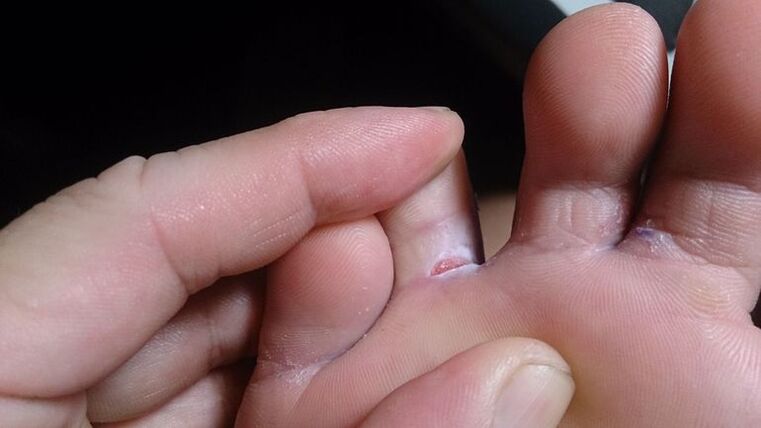
Mycosis is a group of diseases caused by pathogenic fungi.The skin areas that affect these microorganisms are called dermatomycosis.Sometimes they are combined with an onychomycosis disease - nails.Knowing what the fungus looks like on the legs, you can heal the disease in a timely time and prevent complications.There are several options for the course of this pathology.
The foot infection mechanism
There are factors that directly affect the ability to have infected with a fungus.In addition, a large part in this regard depends on the state of immunity.When the body defenses are reduced, the probability of the development of mycoses increases considerably.Immunity can weaken chronic infectious diseases, the pathologies of the endocrine system.You can be infected with a fungus straight and indirectly.In the first case, this happens:
- floor layers;
- various plants;
- Contact with an infected person or animal.
An indirect path involves the use of hygiene and other things that the patient actively uses.
Mushrooms of the genus Candida live on the surface of the epidermis.When the composition of the separate sweat glands changes, a nutritious environment for the development of microorganisms forms.Representatives of the Candida group acquire pathogenic properties.This means that they can easily cause diseases.
Classification of yeast infections
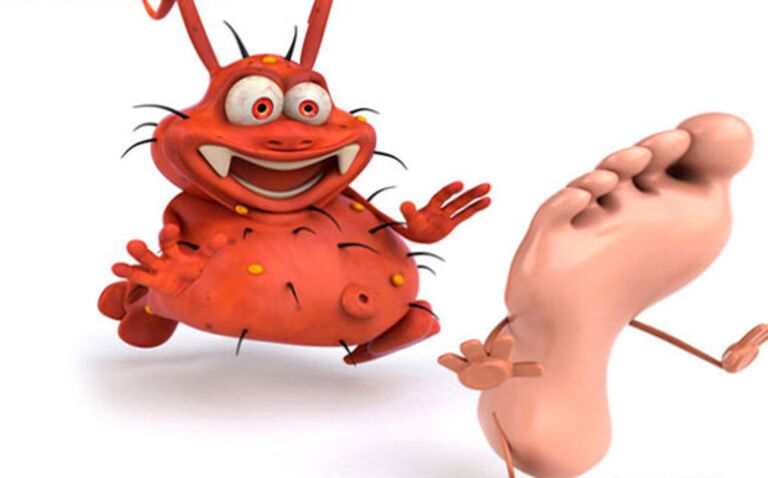
With epidermophytosis, skin and nails are affected.You can be infected with this disease in public places: in gymnasiums, saunas.Through which objects the pathogenic agent is most often transmitted:
- towels;
- ticket vests;
- Chiking;
- carpet.
Men in adulthood more often suffer from epidermophytia.A favorable factor for the development of the disease is an increase in perspiration.
Trichophytosis can be caused by various types of mushrooms from a group of Trichophytons.The disease is considered to be very contagious.It is transmitted through shoes than an infected subject, ends, towels and other door bathing accessories.More often, pathology is found in children.About 17% is prevalence in adolescents.Young men generally suffer.Among men in adulthood, the incidence is even greater.The employees of workshops, baths, showers, athletes, minors.
The candidiasis of the judgment, compared to the epidermophytic, is less common.Most mushrooms of the genus candidates belong to the pathogenic conditioning group.This means that these microorganisms are present on the human epidermis in the norm.They acquire pathogenic properties after a decrease in immunity.
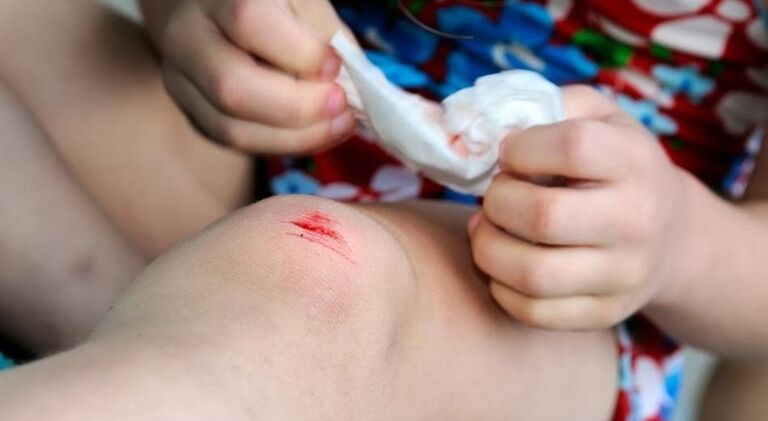
For the candida mushrooms to enter the body, simply use objects belonging to the patient.These microorganisms are often present in food products such as meat, milk and dairy products.The risk of infection increases in the presence of these factors:
- skin injuries due to exposure to chemical components, alkalis and acids;
- maceration, skin sweating;
- The presence of the fungus in the air in large quantities.
Symptoms of the disease
Due to the nature of the course, rubramicosis and epidermophytosis are similar.For this reason, experts combine them in a single category - Mikoza Stop.It is distinguished by the scale, dyshidrotic and intertriginosa of its forms.A separate group is onychomycosis, which can be:
- atrophic;
- normotrophic;
- hypertrophic.
With dysthidrotic mycosis, the work of the sweat glands is inhibited.The fungus on the fingers with an intertrigonic shape looks like a rash.Despite such a division, it often must be considered conditional, because various variations in the disease are combined.
Scaly and dyshidrotic
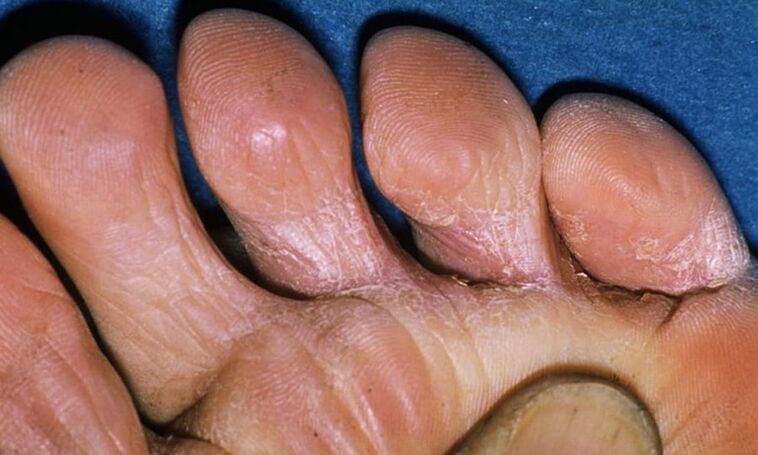
At the beginning, the screaming form of the fungus affects one side.Then it passes on the contrary.Redding areas are formed on the skin, which are gradually starting to take off.Individual patients complain of itching.The area of damage can be large and small, depending on the patient's body.There are people who suffer from this form of mycosis of the feet, but nothing bothers them.
The fungus on the skin of the legs with a dysthidrotic shape seems particularly: the bubbles form with a diameter of 2 to 8 mm in large quantities on the arc of the foot.Little by little, they start to merge into larger training, then broke out.In their place, ulcerative skin lesions are formed.Sometimes the process goes to the inner and external lateral surface.The bubbles are open, and in their place, you can see areas of eruption of diapers with erosion.
The fungus on the legs also manifests in itching and pain.Erosion is dry and healed in the future, and the coat is formed in their place.Fungal infection can be complicated by bacteria.In this case, the liquid located inside the bubbles becomes cloudy.The skin on the feet swells, blushes.A dysthidrotic form is characterized by a long flow.The periods of remission alternate with exacerbations.Usually, the fungus with this form affects only one foot.
Intrigin
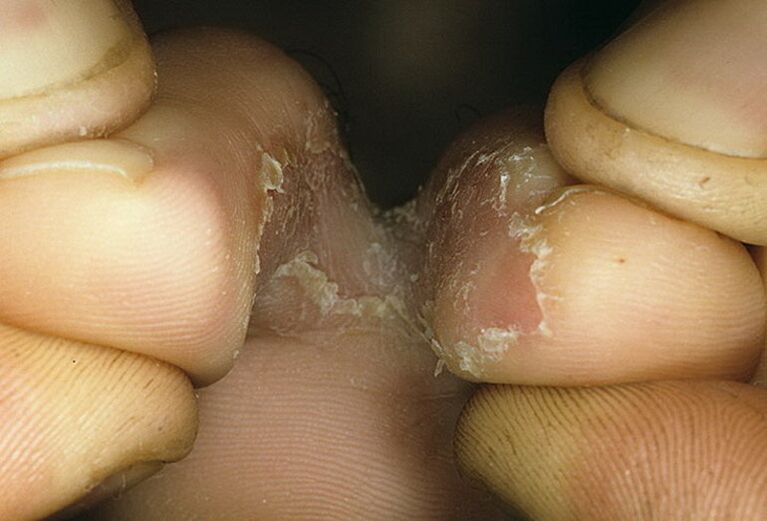
It has become the most widespread and occurs independently.Less generally, this form develops in the context of squamous mycosis.The process affects the area between the 4th and 5th fingers of the foot.The key symptom is the appearance of cracks on an epidermis with a whitish rim.The skin surface layers are exfoliated.Between the fingers, a weakening is formed.The patient complains of burning and itching.In the areas of the lesions, quite painful to the touch of the shape of erosion.
The intriginal form is chronic in most cases, has a long flow.The condition improves during the cold season and exacerbates in summer.In patients with this form, the skin is loosened over time.Its protection functions are reduced.This creates a favorable base for streptococcal infection.On the epidermis, abscesses are formed, which are surrounded by sections of swelling and redness.
Types of onychomycosis
This disease causes nail damage to the fingers.The pathogen first attacks the free edges of the plate.Here, scratches and stains of a yellow shade form.Several forms of onychomycosis are distinguished:
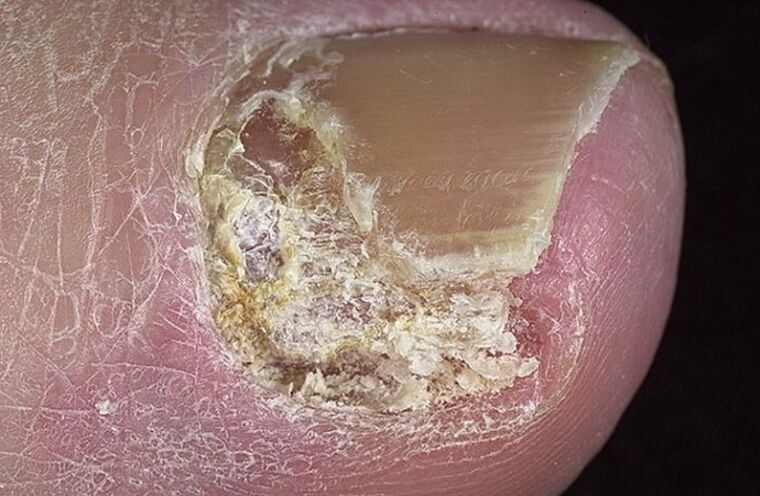
- Hypertrophic.The nail is becoming yellow, its thickness increases.It collapses and the skin under it peels off and thickens.
- Atrophic.The opposite situation is observed here, when the nail becomes thin and is destroyed.The skin under it is covered with a keratinized layer.
- Caused by molds.It is formed in the context of other types of nail diseases.The plate can be green, yellow, brown and sometimes even black.Paronichia is formed in the periologe - purulent inflammation.
In 70% of cases, onychomycosis affects 3, 4 and 5 fingers on the legs.In 30% of cases, 1 and 4 fingers suffer.Very often, a normotrophic form of the disease is found when yellow spots are present on the nail, but its integrity is not raped.
Mushroom treatment
There are various treatment patterns for the disease that are individually selected by a doctor.
Additional treatment methods include the supply of immunostimulants and vitamins.They help strengthen immunity.If a bacterial infection has joined, antibiotics are prescribed.Sometimes the occurrence of fungal infection is favored by the underlying disease.It must be treated in the first place.We are talking about dermatological pathologies and chronic infections.Antihistamines are recommended in the presence of an allergic component.
Traditional medicine
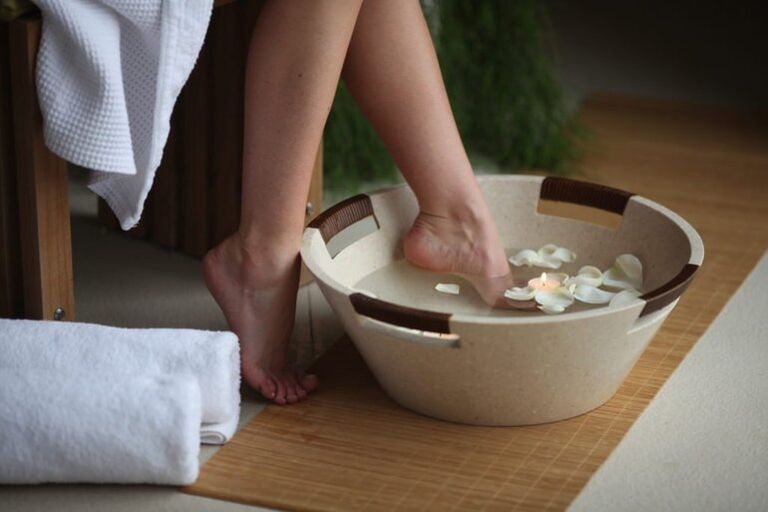
Mycosis does not represent a significant danger to health.But their presence helps to reduce immunity, acts as an objective of inflammation.Only antifungal treatment using specialized drugs helps get rid of such a problem.In the early stages, the use of folk recipes is authorized, which is supplemented by basic therapy.What methods can be practiced:
- Reception of baths;
- Treatment of affected areas with decoctions of medicinal herbs;
- Application of ointment.
For baths, you can take wine vinegar because it has an antiseptic effect.You must first wash your legs with lukewarm water and dry them.Then, the wine vinegar is poured into the water in a ratio of 1 to 2 and the legs are lowered.They hold them there for 5 minutes, after which they put socks for the night and go to bed.
Another version of the bath implies the use of soda and salt.Take a tablespoon of the two ingredients and dissolve in the water.After that, lower the legs in the solution, dispute not more than 15 minutes.At the end of the procedure, the legs are washed with lukewarm water.
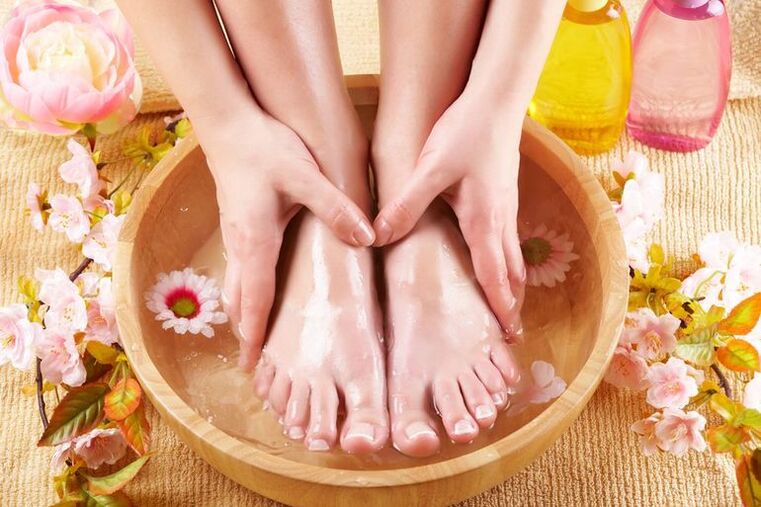
To treat the legs with therapeutic decoctions, medicinal verbena and calendula inflorescences can be used.In addition, blackberry berries dried in oak have a good antiseptic effect.The selected components are mixed in the same amount.3 tbsp.L.And pour a glass of water.Put on low heat for 15 minutes.Filter and moisten the decoction lesion with the resulting decoction.Additionally, this tool can be used for lotions.
To prepare a healing ointment, they mix in the same amount of pork fat and sifted wood ash.The resulting ointment must be thick and have a homogeneous consistency.It is applied on the clean and dry legs twice a day: morning and evening.



























